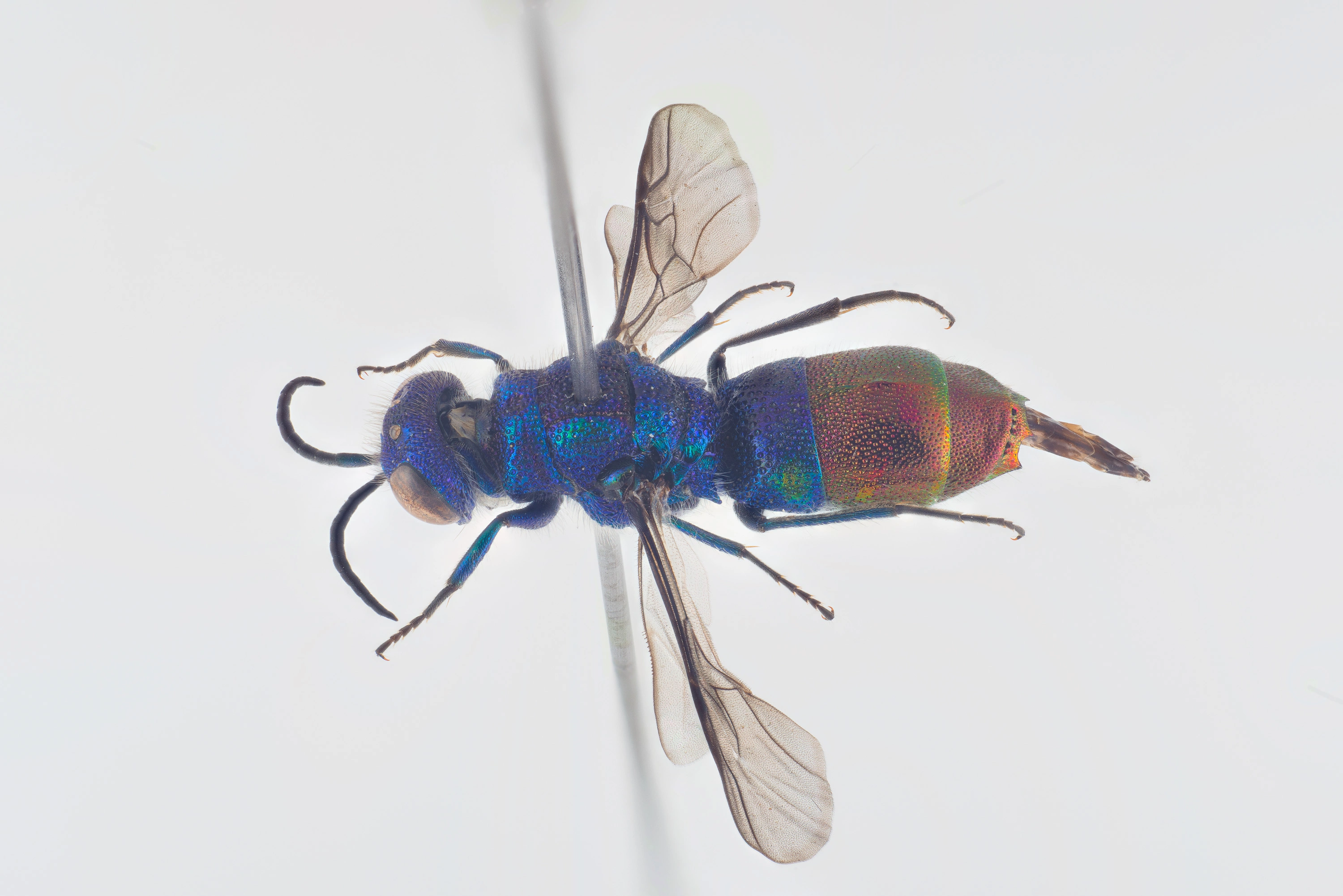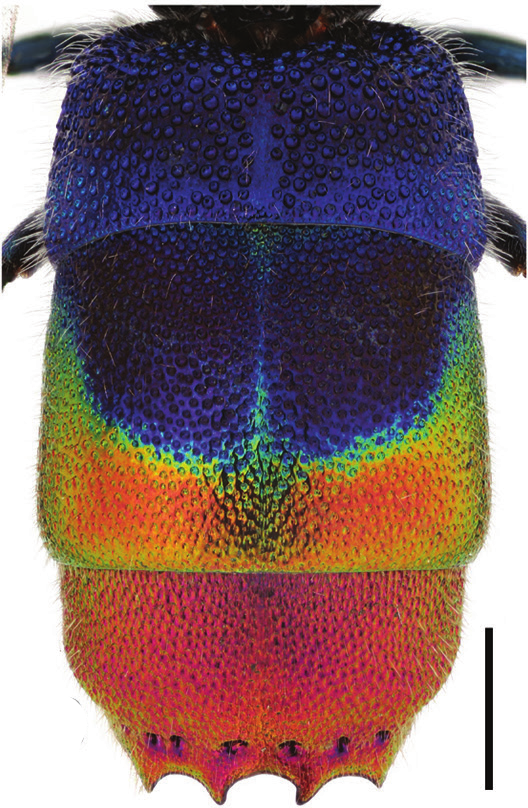Chrysis fulgida
A relatively common species, particularly in forest areas of eastern parts of Fennoscandia. Hosts are Eumeninae of the genus Symmorphus, particularly S. crassicornis. The species is easy to identify through the unique colour patterns that is different in males and females.
- Innhold
- Diagnosis
- Distribution
- Biology
Diagnosis
Figure 93
Metasoma, dorsal view: Chrysis fulgida ♂. Scale 1 mm.
Length 7–12 mm.
The species differs from other North European chrysidids by its unique colouration. The head, mesosoma and T1 are dark blue or violet blue, whereas T2 and T3 are bright red (or rarely greenish) in the female. T1 often has golden reflections laterally. The male resembles the female in colouration, but T2 has a large dark blue or nearly black patch antero-dorsally with greenish margins (Fig. 93).
Distribution
Denmark, Estonia, Finland, Latvia, Lithuania, Norway, Sweden. Common.
Trans-Palearctic: from western Europe to central Asia, Russian Far East and China (Linsenmaier 1997, Kurzenko and Lelej 2007, Rosa et al. 2014).
Be aware that the records present in the GBIF map may be misleading for some countries due to unrevised data sets or missing information.
GBIF Taxon: Chrysis fulgida Linnaeus, 1761Biology
Habitat: forest margins, clearings and gardens with sun-exposed dead wood. Adults are usually found flying near walls of wooden buildings, dead tree trunks (e.g. Populus, Salix, Betula, Quercus), log piles and poles. Occasionally they also visit flowers of Apiaceae (Rosa 2004, our own obs.).
Flight period: mid-May to late August.
Host: Symmorphus allobrogus (Saussure), S. bifasciatus (Linnaeus), S. crassicornis (Panzer) and S. murarius (Linnaeus) (Trautmann and Trautmann 1919, Wagner 1938, Pärn et al. 2014, Hopfenmüller 2015, our own obs.). Possibly also Ancistrocerus parietum (Linnaeus) (Vespidae) (Lamprecht 1881).

